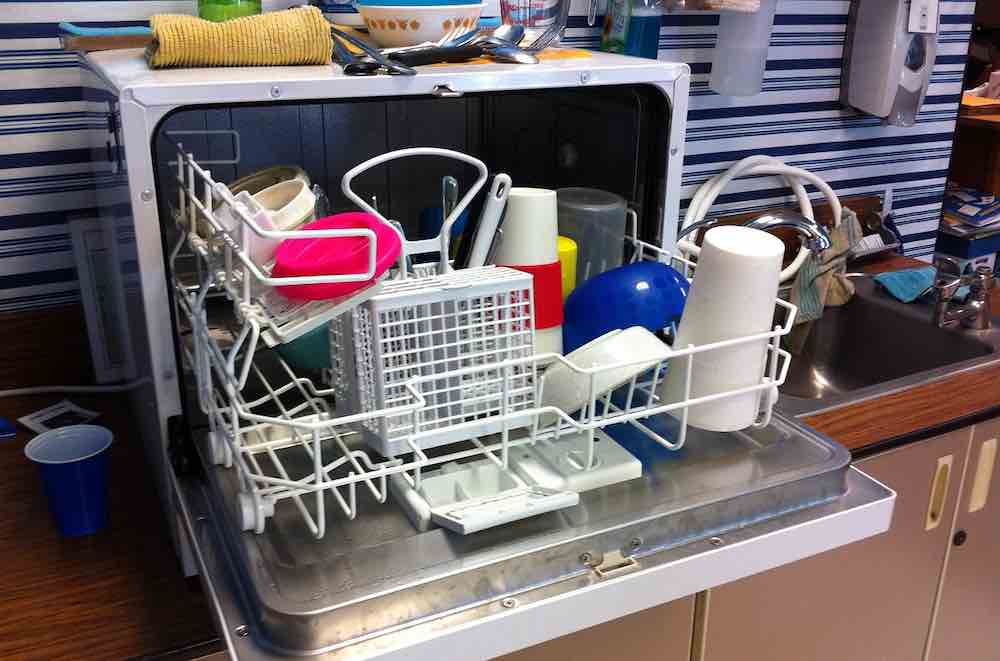A dishwasher can be a real game-changer when it comes to saving time and effort in cleaning up after meals. However, before you start the installation process, it’s important to know about the location rules for dishwashers to ensure that you install it in a safe and functional location.
Dishwasher Location Rules to Keep in Mind

In this guide, we’ll address some common questions that people have about dishwasher location rules, including whether you can put a dishwasher under a sink, whether a dishwasher can be next to a stove, and whether you can put a dishwasher under an oven.
1. Keep it close to the sink
One of the most important rules when it comes to dishwasher location is that it should be installed as close to the sink as possible. This is because the dishwasher needs to be connected to the sink’s water supply and drainage system, and being close to the sink will make this process much easier.
When installing your dishwasher, make sure that the water supply line and drainage hose are long enough to reach the sink. If they are not long enough, you may need to hire a plumber to extend them.
2. Avoid corners
Another important rule when it comes to dishwasher location is to avoid installing the dishwasher in a corner. This is because a corner location can make it difficult to load and unload the dishwasher, as well as making it harder to access the controls.
Instead, try to install the dishwasher in a location that is easy to access from all sides. This will make it much easier to use and maintain over time.
3. Leave enough space
When installing your dishwasher, make sure that you leave enough space around the appliance for easy access and maintenance. This includes leaving at least 1 inch of clearance on all sides of the dishwasher, as well as leaving enough space under the countertop to accommodate the dishwasher’s height.
If you are installing the dishwasher under a countertop, make sure that there is enough clearance for the dishwasher door to open fully. This will make it much easier to load and unload the dishwasher.
4. Keep it level
Also, you should ensure that the appliance is level. This is because an unlevel dishwasher can cause water to pool inside the appliance, which can lead to leaks and other problems over time.
To level your dishwasher, use a spirit level to check that the appliance is even. If it is not level, use shims to adjust the height of the dishwasher until it is even.
5. Install a high loop
When connecting the dishwasher’s drainage hose to the sink’s drainage system, it is recommended to install a high loop. This is a loop in the hose that prevents water from flowing back into the dishwasher from the sink.
To install a high loop, simply attach the drainage hose to the underside of the countertop, as high as possible. This will create a loop in the hose that prevents water from flowing back into the dishwasher.
Can You Put a Dishwasher Under a Sink?
Yes. Actually, having the dishwasher right under the kitchen sink is one of the most common locations for most users. This can be a great way to save space in a smaller kitchen and keep the dishwasher out of the way. However, there are some important rules to keep in mind when installing a dishwasher under a sink.
Firstly, it’s important to ensure that there is enough space under the sink to accommodate the dishwasher. You’ll need to measure the height of the dishwasher and compare it to the available space under the sink. If there isn’t enough room, you may need to consider a different location or choose a smaller dishwasher.
In addition, you’ll need to ensure that the plumbing and electrical connections are in the correct location. Most dishwashers require a hot water supply, a drain connection, and an electrical outlet. You’ll need to ensure that these connections are accessible and in the correct location for your dishwasher model.
Finally, you’ll need to consider the location of the sink and the dishwasher door. Make sure that the dishwasher door can fully open without hitting the sink or any other obstacles. You’ll also want to ensure that the dishwasher doesn’t block access to the sink, as this can be inconvenient when washing larger items.
Can a Dishwasher be Next to a Stove?
Yes. Another common location for a dishwasher is next to the stove. This can be convenient for loading dishes directly from the stove and for saving space in a smaller kitchen. Just like installing it under the sink, you need to follow several rules when installing a dishwasher next to a stove.
Firstly, you’ll need to ensure that there is enough space for the dishwasher and the stove. You don’t want the dishwasher to be too close to the stove, as this can create a fire hazard. Most experts recommend leaving at least 18 inches of space between the dishwasher and the stove.
Also, you’ll need to consider the location of the dishwasher door. Make sure that the dishwasher door can fully open without hitting the stove or any other obstacles. You’ll also want to ensure that the dishwasher doesn’t block access to the stove, as this can be inconvenient when cooking larger meals.
Finally, you’ll want to ensure that the dishwasher is installed in a way that doesn’t interfere with the ventilation system for the stove. If the dishwasher is installed in a way that blocks the flow of air to the stove, this can create a fire hazard.
Can You Put a Dishwasher Under an Oven?
Yes. Most people often consider locating their dishwasher right under the oven. This can be a great way to save space and keep the dishwasher out of the way. When installing a dishwasher under an oven, you need to take some precautions.
Firstly, you’ll need to ensure that there is enough space for the dishwasher and the oven. You don’t want the dishwasher to be too close to the oven, as this can create a fire hazard. Most experts recommend leaving at least 18 inches of space between the dishwasher and the oven.
Secondly, you’ll need to consider the location of the dishwasher door. Make sure that the dishwasher door can fully open without hitting the oven or any other obstacles. You’ll also want to ensure that the dishwasher doesn’t block access to the oven, as this can be inconvenient when cooking larger meals.
Finally, you’ll need to ensure that the dishwasher is installed on a stable surface that can support its weight. Dishwashers can be heavy, so it’s important to make sure that the surface is strong enough to support it. Additionally, you’ll want to ensure that the dishwasher is level, as this can affect its performance.
How To Install Your Dishwasher
Installing a dishwasher may seem like a daunting task, but with the right tools and instructions, it can be a manageable DIY project. In this guide, we’ll walk you through the steps for installing a dishwasher in your kitchen.
Step 1: Gather your tools and materials
Before you begin, make sure you have all the necessary tools and materials. You’ll need a Phillips head screwdriver, adjustable wrench, pliers, a level, a drill, screws, a dishwasher installation kit, and a new electrical box if necessary. Make sure to read the manufacturer’s instructions for your specific dishwasher model, as some may require additional tools or materials.
Step 2: Prepare the space
Ensure that the space where you want to install the dishwasher is clear of any debris or items that could obstruct the installation. Also, ensure that there is a nearby electrical outlet and a water source for the dishwasher.
Step 3: Install the electrical box
If you need to install a new electrical box, turn off the power to the area of your kitchen where you’ll be working. Remove the existing electrical box, and install the new one in a location that is accessible and within reach of the dishwasher’s power cord. Then, run the power cord through the electrical box.
Step 4: Install the water supply line
Next, install the water supply line. Attach the hot water supply valve to the water source using pliers, and connect the water supply line to the valve. Ensure that the water supply line is not kinked or twisted, as this can affect the water flow to the dishwasher.
Step 5: Attach the drain hose
Attach the dishwasher drain hose to the sink drain or garbage disposal. The hose should be connected using a hose clamp, and should be looped up to the underside of the countertop to prevent backflow.
Step 6: Level the dishwasher
Use a level to ensure that the dishwasher is level from front to back and side to side. Adjust the legs of the dishwasher as necessary to ensure that it is level.
Step 7: Secure the dishwasher in place
Use screws to secure the dishwasher to the underside of the countertop. This will help to prevent the dishwasher from tipping over or moving during operation.
Step 8: Connect the power cord
Connect the power cord to the electrical box, and turn on the power to the area. Test the dishwasher to ensure that it is operating properly.
Related:
- GE Dishwasher Diagnostic Mode Instructions
- GE Dishwasher No Lights on Control Panel [FIXED]
- GE Dishwasher Fuse Location Revealed
- Samsung Dishwasher Diagnostic Mode Instructions
- GE Microwave Fuse Location & Replacement Guide
- Kitchenaid Dishwasher Diagnostic Mode Explained
- Kohler Touchless Faucet Not Working: Causes & Fixes
- Best Settings for Miele Coffee Machine
- Cuisinart Dehydrator Temperature Settings Guide
- Cuisinart Coffee Grinder Settings Explained
![Whirlpool WRX735SDBM02 Ice Maker Not Working [FIXED] Whirlpool WRX735SDBM02 Ice Maker Not Working [FIXED]](https://homestuffmag.com/wp-content/uploads/2023/04/Whirlpool-WRX735SDBM02-Ice-Maker-Not-Working-211x150.jpg)




